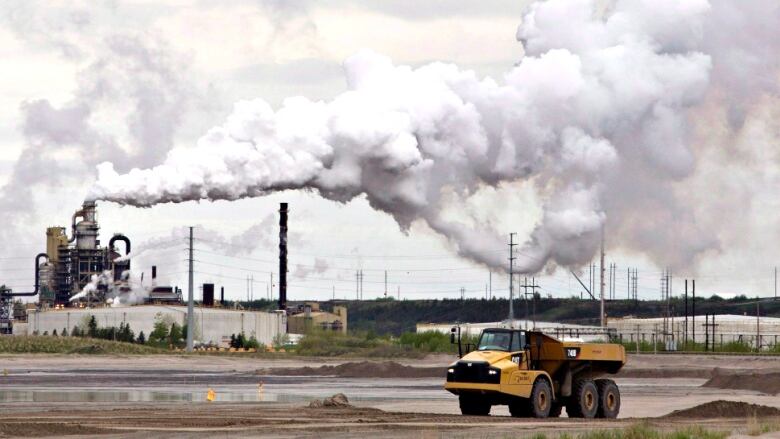Alberta's oilsands emissions cap will cost $250B but do little to cut greenhouse gas, Fraser Institute says
Think-tank report says NDP plan would net 'meagre' 0.035% drop in emissions

The Alberta government's 100-megatonne emissions cap on future oilsands development will leave hundreds of billions of dollars in the ground while doing little to reduce greenhouse gases, says a report by the Fraser Institute.
The reportestimates Alberta's proposed cap will cost the national economy more than $250 billion in lost production between 2025 and 2040,while reducing global greenhouse gas (GHG) emissions by a paltry 0.035 per cent.
- Alberta's oil woes don't compare to Ontario in '09, says memo
- Domestic crude arriving at Canadian refineries in May fell to lowest level since 1973
"There is a serious imbalance between the high costs of Alberta's proposed carbon emissions cap to the economy and the minimal benefits that could be realized in greenhouse gas emission reductions," said report co-author Ken Green, senior director of the Fraser Institute'sCentre for Natural Resources.
Simon Dyer of the Pembina Institute, however, saidthe Fraser Institute's report doesn't take into account changes in the global energy marketplace.
"Instead, it is based on unreasonable production levels that don't consider the world making progress on climate change," he said. "Clearly if the world makes progress on climate change,high-carbon fuels are going to be penalized."
Dyer said if the world achieves significant cuts in GHG emissions, it will be through a major reduction in oil consumption.
"So only the cleanest projects are going to be able to compete," he said. "So actually putting rules in place that seek to clean up the oilsands industry is actually going to be necessary to help our industry compete in the long term."
University of Alberta economist Andrew Leach wasalso critical of the report, suggesting its authors have made some faulty assumptions.
"The numbers appear to use a per barrel value of $83, which is higher than the current price of bitumen by at least a factor of three," he said.
"Furthermore, given what I can tell, the study does not assume any progress in oilsands emissions per barrel and no ability to reduce emissions other than shutting in production."
Report also considers lower emissions intensities
The report actually does consider that possibility, however.
While the main projections are based on "current emissions intensity levels," a later section of the report addresses the possibility that "emissions intensities from oilsands extraction will be reduced to a certain extent in response to the 100-megatonneemission regulation."
Based on an earlier study from the Canadian Energy Research Institute, the Fraserreport suggested overall oilsands emissionsintensity could decline by11.5 per centbetweenbetween 2014 and 2050.
At an annualizedrate, the report saidthat level of intensity reductionwould mean oilsands production wouldmove beyond the 100-megatonne thresholdin 2027, two years later than under current emissions intensity levels.
Underthat scenario, the report estimatesthe cumulative value of lost production would be closer to$150billion by 2040.
"However, projections of future oilsands emissions intensity are highly uncertain and will depend on a number of different variables including the source of energy used in extraction, potential technological breakthroughs, the quality of the reservoirs, and a number of other factors," the report cautions.
Clarifications
- An earlier version of this article suggested the study does not seem to assume any possibility of a reduction in oilsands emissions other than shutting production. In fact, the Fraser Institute report does consider that possibility in a later section, estimating that under a revised emissions scenario the cumulative value of lost production could be closer to $150 billion by 2040.Aug 16, 2016 2:57 PM MT












_(720p).jpg)


 OFFICIAL HD MUSIC VIDEO.jpg)
.jpg)



























































































